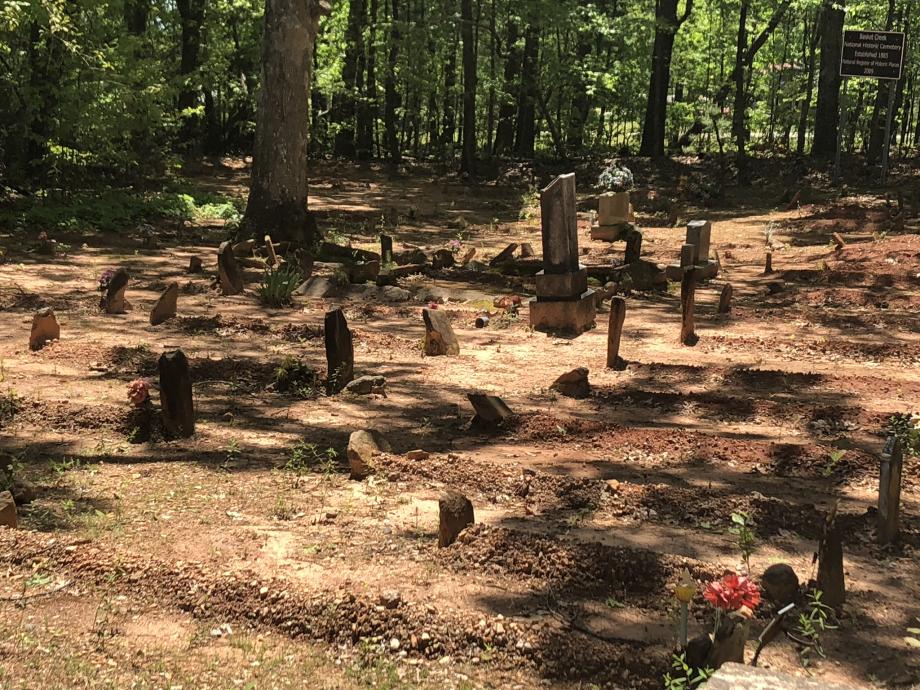The Basket Creek Cemetery is a prime example of the West African custom involving grave mounding to honor deceased family members and friends. Poorly maintained mounds are seen as insults to the dead and are poor reflections on the community as a whole. Not the case at Basket Creek Cemetary. When you visit the cemetery you quickly notice each grave is represented with a mound of earth, and the entire yard appears to be swept. Twice a year for the last 130 years the congregation at Basket Creek have maintained the graves and continue to pass along the skills to the next generation.


